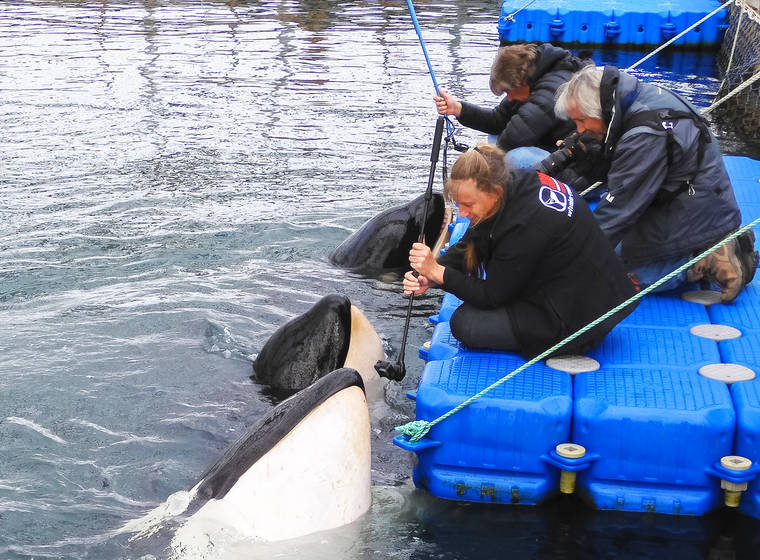LIHUE — While ReefGuardians Hawaii is doing reef surveys around Kauai, members of RGH are also working on a project to free whales in Russia.
Also, the organization has also been busy working with Heal The Ocean to locate and cap leaking oil well heads along U.S. shorelines.
It’s different prongs of the same spear, approaching ocean health from many angles.
RGH founder Harry Rabin took a break from checking the reefs at places like Anini, Makua and Princeville to talk about the international team that’s working to save 11 orcas and 87 beluga whales being held in Russia’s Srednyaya Bay.
“They’ve brought them to this bay, and put them on top of each other in these pens,” Rabin said, going through footage he’s taken of the whales. “It’s not a good living situation. When we got there, it was contentious, lots of resentment.”
The story starts over the summer in 2018, when the whales were captured without permits and legal approval and moved to pens in the bay. The “whale jail” made the news the following November and that, combined with pressure from advocates, triggered a Russian investigation.
That led to a late-February mandate from Russian President Vladimir Putin to find a solution for the situation and in May, authorities said the whales could be freed by July.
In April, Rabin and the international team came into play, invited by the Russian Ministry and the governor of Vladivostok to assess the situation. RGH provided the team with an infrared scope, audio and video equipment, drones and hydrophones.
What the team found was bleak.
“They’re all releasable, but they’re not in good shape,” Rabin said. “There are skin diseases on the beluga and at least half the orcas have HPV1 and 2.”
The team wasn’t allowed to go into the water with the animals or to take blood or DNA samples. They were watched closely and had to slowly work their way into access at the facility where the whales are being kept.
“They had drone jamming gear,” Rabin said. “When I flew my drone (over the pens) they were all taking bets and laughing, saying this was going to be another one that falls into the ocean.”
Eventually, the workers at the compound turned off the jamming gear and allowed the team to take footage of the pens.
On day three of their stay at Srednyaya Bay, the team made a breakthrough and signed a release agreement with the company holding the whales.
That agreement, signed by Gov. Oleg Kozhemyako of Russia’s Primorsky region, furthers the goal to release all of the whales.
“It’s been 90 days since Putin said to release them,” Rabin said, pointing out the orcas aren’t able to handle the icy waters in the bay and are running out of time.
He points out one of the orcas has reportedly already died in captivity, though the owners deny that.
While there’s now a targeted effort to release the whales, the Cousteau, Rabin and the rest of the international team have to figure out how to do the release. They need to release them in an area with warmer water, and need to match the whales back to their pods.
“Mutual cooperation between our scientists and Russia’s is underway and we hope to soon return all orca and beluga back to where they were captured so they can be united, once again, with their families,” the team said in a press release about the trip.
All of it’s detailed in the scientific footage Rabin shot, but also will be presented in video form at the Jackson Hole Film Festival. Another series is being created on the topic as well.
And while Rabin and the team is gearing up to go back, Rabin says that first trip to the “whale jail” was “life-changing especially after hearing them breathing and see them looking back at you …” Rabin said. “Out of the 10 orcas that were there, I bonded with six; bending down over the platform and shooting video of their mouths.”
•••
Jessica Else, environment reporter, can be reached at 245-0452 or jelse@thegardenisland.com.



